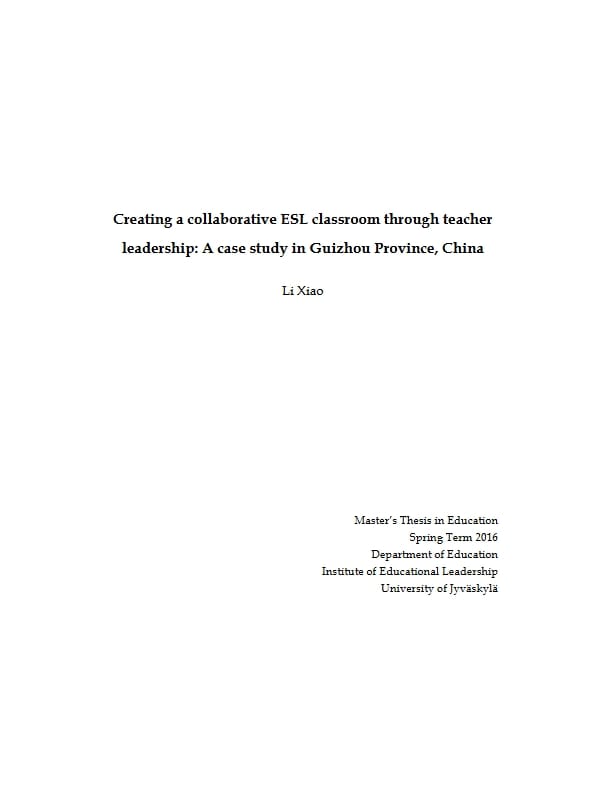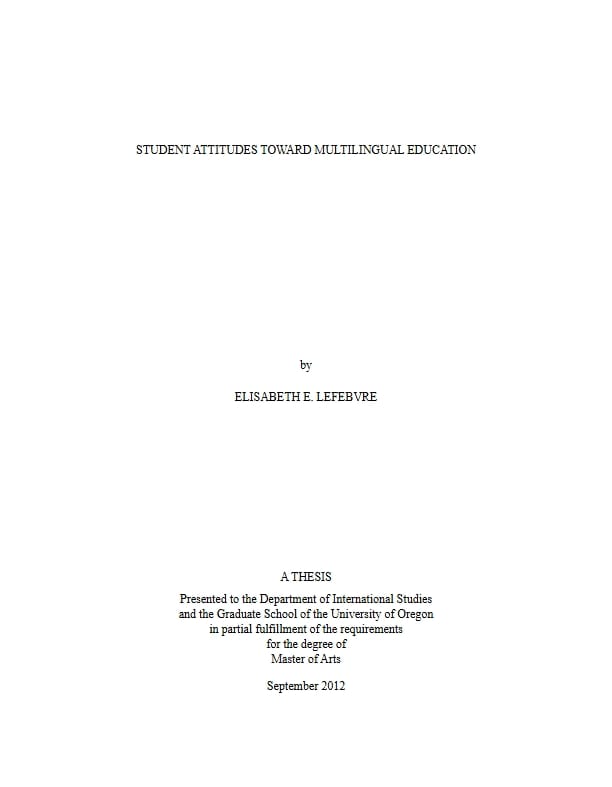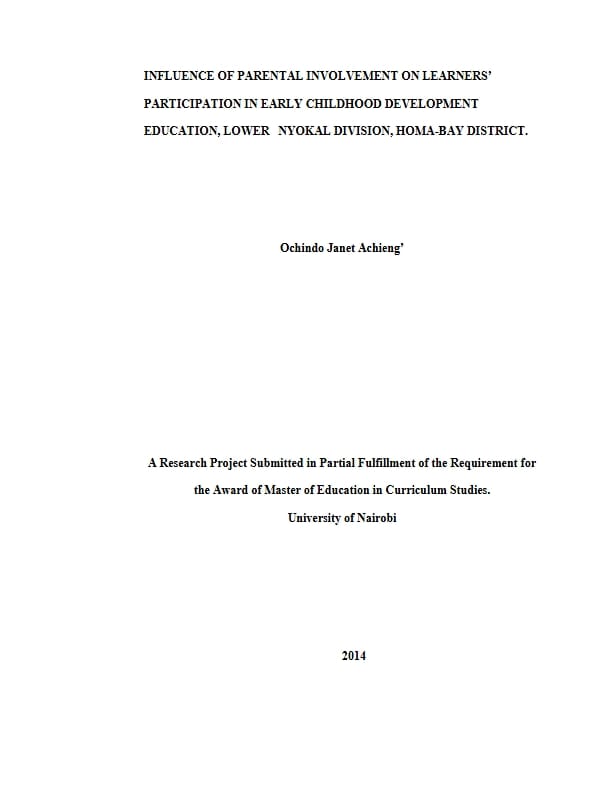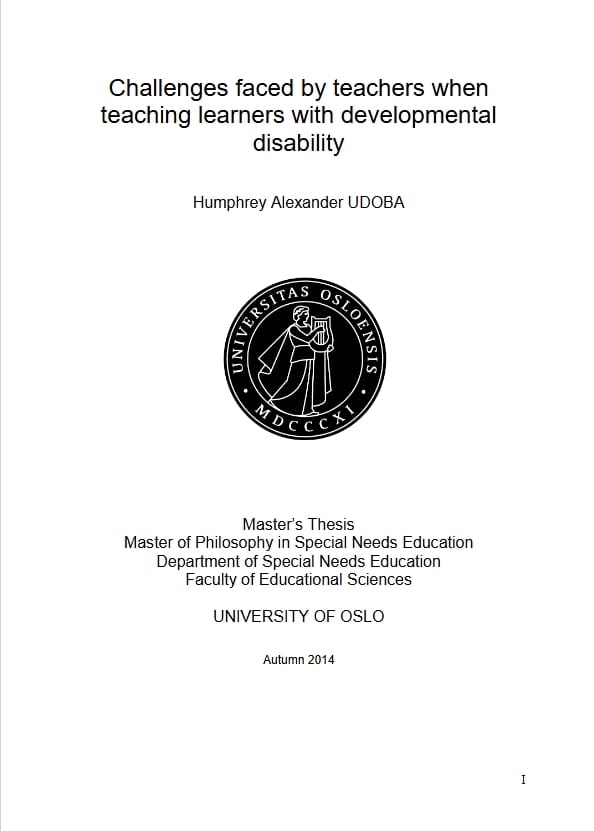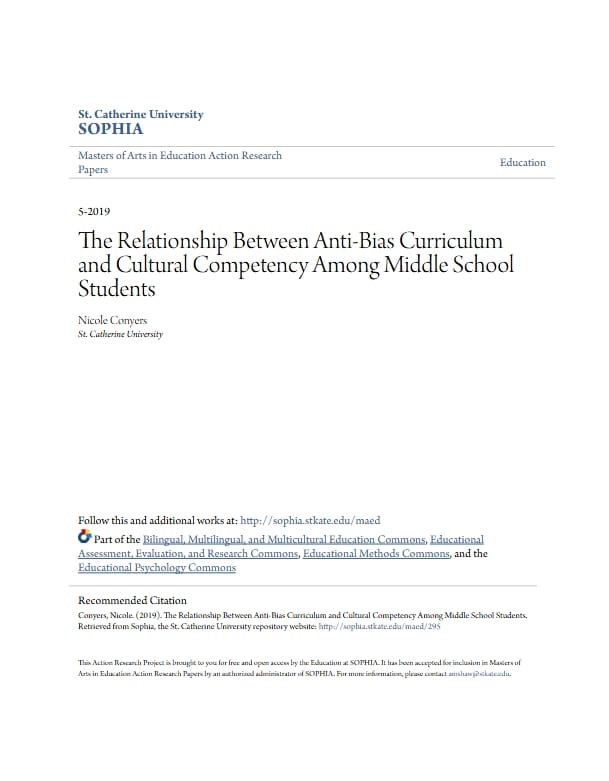CONTENTS
1. INTRODUCTION……………………………………………………………………………….. 7
2. TEACHER LEADERSHIP ………………………………………………………………….. 11
2.1 Definition of educational leadership ……………………………………………. 11
2.1.1 Six categories of leadership ………………………………………………………. 11
2.2 Definition of teacher leadership …………………………………………………… 12
2.2.1 Teacher leadership in China ………………………………………………….. 14
2.2.2 Teacher leadership and student learning outcomes ……………….. 18
3. COLLABORATIVE LEARNING………………………………………………………… 20
3.1 Definition of collaborative learning ……………………………………………… 20
3.2 Four traits of a collaborative classroom………………………………………… 21
3.3 Collaborative learning in China …………………………………………………… 25
4. TRADITIONAL ESL CLASSROOM IN CHINA …………………………………. 27
5. RESEARCH PROBLEMS …………………………………………………………………… 30
6. IMPLEMENTATION OF THE STUDY ………………………………………………. 31
6.1 The Context of the Study …………………………………………………………….. 32
6.1.1 Weng’an No.2 High school background ………………………………… 33
6.1.2 Some reform changes in Guizhou Province and Current situation
of collaborative ESL classroom ………………………………………………………….. 34
6.1.3 Some difficulties in the reform ………………………………………………. 35
6.1.4 Current situation of collaborative ESL classroom …………………… 36
6.2 The Participants and the Research Process …………………………………… 37
6.2.1 The Participants ………………………………………………………………………….. 37
6.2.2 Research process…………………………………………………………………………. 37
6.3 Research methods……………………………………………………………………….. 39
6.4 Data analysis ………………………………………………………………………………. 40
6.5 Ethical solutions …………………………………………………………………………. 41
7. RESULTS ………………………………………………………………………………………….. 43
7.1 Teachers’ and students’ attitudes towards collaborative learning in
the ESL classroom ………………………………………………………………………………… 43
7.1.1 The attitudes of teachers ……………………………………………………….. 43
7.1.2 The attitudes of students ………………………………………………………. 44
7.2 The advantages and disadvantages of collaborative learning in the
ESL classroom ……………………………………………………………………………………… 45
7.2.1 The advantages of collaborative learning ………………………………. 45
7.2.2 The disadvantages of collaborative learning ………………………….. 49
7.3 The barriers and promotion factors of collaborative learning in the
ESL classroom ……………………………………………………………………………………… 52
7.3.1 The barriers of collaborative learning ……………………………………. 52
7.3.2 The promotion factors of collaborative learning …………………….. 57
7.4 How to utilize collaborative learning through teacher leadership in
the ESL classroom ………………………………………………………………………………… 60
8. DISCUSSION ……………………………………………………………………………………. 64
8.1 Examination of the results …………………………………………………………… 64
8.2 Reliability and Validity of the study…………………………………………….. 66
8.3 Generalizability and Limitations …………………………………………………. 68
8.4 Challenges for further research ……………………………………………………. 69
REFERENCES …………………………………………………………………………………………. 71
APPENDICS …………………………………………………………………………………………… 78
Appendix A: Research Cover letter (English version) ……………………………….. 78
Appendix B: Research Cover letter (Chinese version) ……………………………….. 79
Appendix C: Open-ended questionnaire for teachers (English version)……… 80
Appendix D: Open-ended questionnaire for teachers (Chinese version)…….. 82
Appendix E: Open-ended questionnaire for students (English version) …….. 83
Appendix F: Open-ended questionnaire for students (Chinese version) …….. 85
Appendix G: Summer time schedule for students in Weng’an No.2 High
School …………………………………………………………………………………………………….. 87
Appendix H: Winter time schedule for students in Weng’an No.2 High School
……………………………………………………………………………………………………………….. 89

